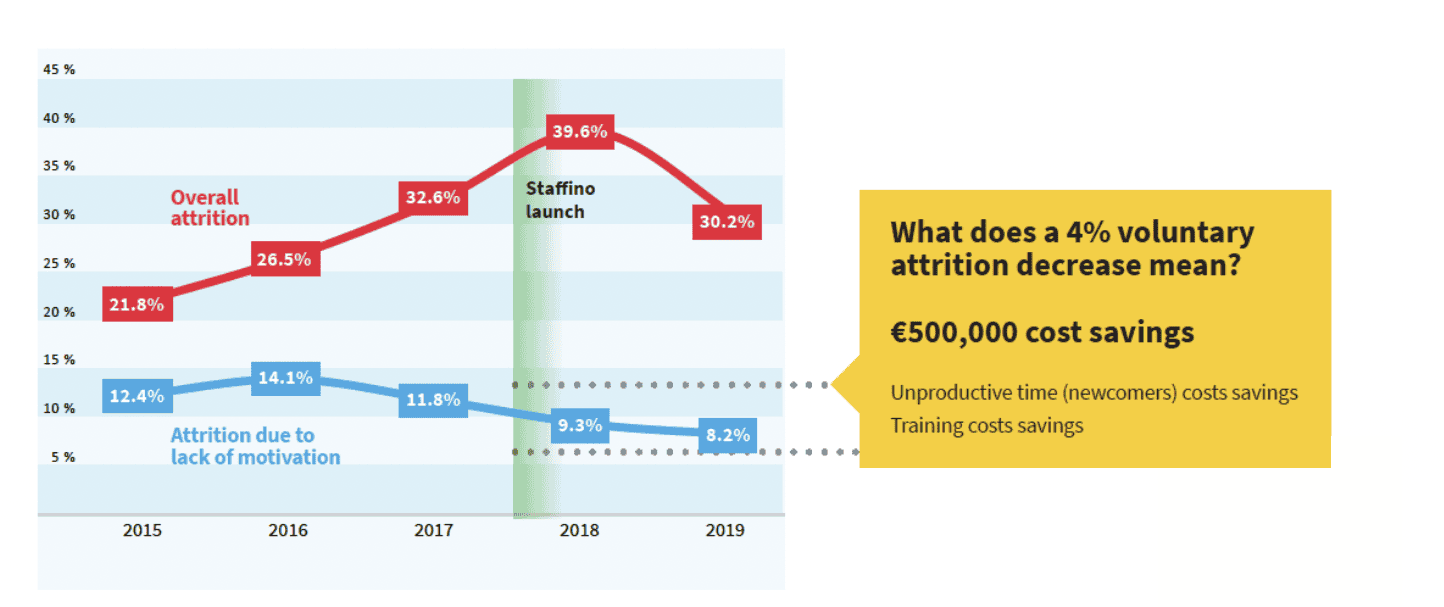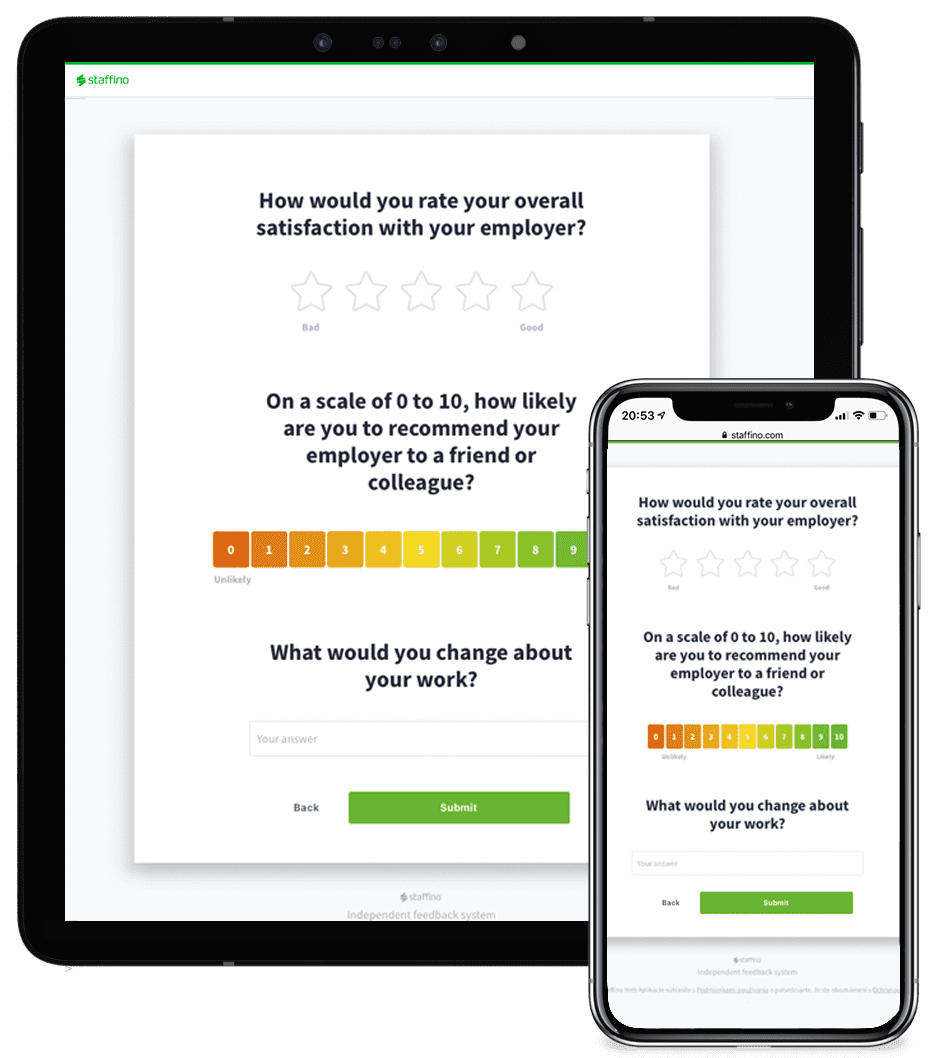Regular employee satisfaction surveys should be the core of every employee motivation management strategy. They can help you determine the overall health of your organisation and gain a deeper understanding of what hinders your employees’ productivity. They can also provide you with actionable insights that can help identify the main process gaps and solutions to increase employee performance and manage employee turnover.
Types of Employee Satisfaction Surveys
To fully utilise your employee satisfaction survey, choosing the right survey type for a particular occasion is essential. For example, do you want to find out the level of employee engagement? Or how satisfied your employees are with the management of a specific task or project? Below are the most common survey types based on the objectives the manager or employer has in mind:
- Regular pulse check surveys
Pulse check is a shorter, more frequent survey conducted on a monthly or quarterly basis. It measures the overall health of an organisation through questions related to employee satisfaction with management performance, job responsibilities, work environment or team communication. They are especially useful for gathering actionable insights and managing employee turnover.
- Employee lifecycle surveys

These surveys help you understand how satisfied or dissatisfied your employees are at different stages of their lifecycle. They can be further categorised as recruitment, onboarding, training, performance, engagement, or exit surveys. The employee insights gathered from these surveys will help you determine which management or HR processes need improvement.

- Ad-hoc employee satisfaction surveys
Ad-hoc or instant surveys are usually conducted when a particular objective suddenly arises, such as major organisational changes, HR process changes, or changes in the company’s vision. These surveys can also determine how employees handle specific tasks or projects or how satisfied they are with the project lead or manager.
5 Essential Steps to Create an Employee Satisfaction Survey
Creating a successful employee satisfaction survey that benefits your business needs careful planning. Five main elements must be considered when developing any employee satisfaction survey:
- Set a clear purpose
First of all, every employee satisfaction survey should have a clear objective. You should specify why you are doing the survey and how you will use the results. To avoid confusing your employees about the purpose, try to refrain from combining too many unrelated questions about different aspects of your organisation into one questionnaire.
- Communicate the purpose with the employees
Align your employees with the purpose of the survey and let them know what follow-up actions will be taken based on its findings. To encourage participation, communicate that the survey is anonymous and stress the importance of their input. You can opt for non-anonymous surveys; however, anonymous ones usually result in more honest answers. The easiest way to create anonymous and non-anonymous surveys is through online employee engagement software such as Staffino.
If you have successfully completed the first two steps, you are just one sixty-minute call and about three email answers away from being ready to go live. When you opt for Staffino’s managed services, our senior EX expert will do the magic and prepare a tailor-made EX campaign based on your requirements and our rich experience.
- Choose the type of questions and survey length

Choose the proportion of multiple-choice and open-text questions, and make sure your survey is short and engaging. It is essential to ask questions that will result in actionable feedback. If you are not sure where to start, almost every employee engagement software comes with a ready-made set of questions for both regular and ad-hoc surveys.
- Schedule the survey
Set a starting and ending time for your employee satisfaction survey. Carefully consider what is the best time to do the survey because, with some types of surveys, it might be wiser to give employees time for reflection rather than asking them for feedback right after a specific event. It is equally important to reserve time for the analysis of the results in advance so that you will not forget about the survey in case you are busy with other work.
- Take follow-up actions
After the survey ends, do not forget to thank your employees for their valuable input. Once you analyse and interpret the survey results, communicate them with management and department leaders, who should conduct follow-up meetings and create an action plan to be included in your employee motivation management.

The Final Takeaway
In the end, it doesn’t matter so much how you collect employee feedback. Rather than that, what should matter is if the gathered feedback could be used for improvements and if the HR manager or employer is ready to plan and implement changes and corrective actions based on employee feedback received. Using employee engagement software enables one to create and distribute various types of employee satisfaction surveys quickly and efficiently. However, the rest of the work is up to you if you want to see positive changes in your employee engagement.
